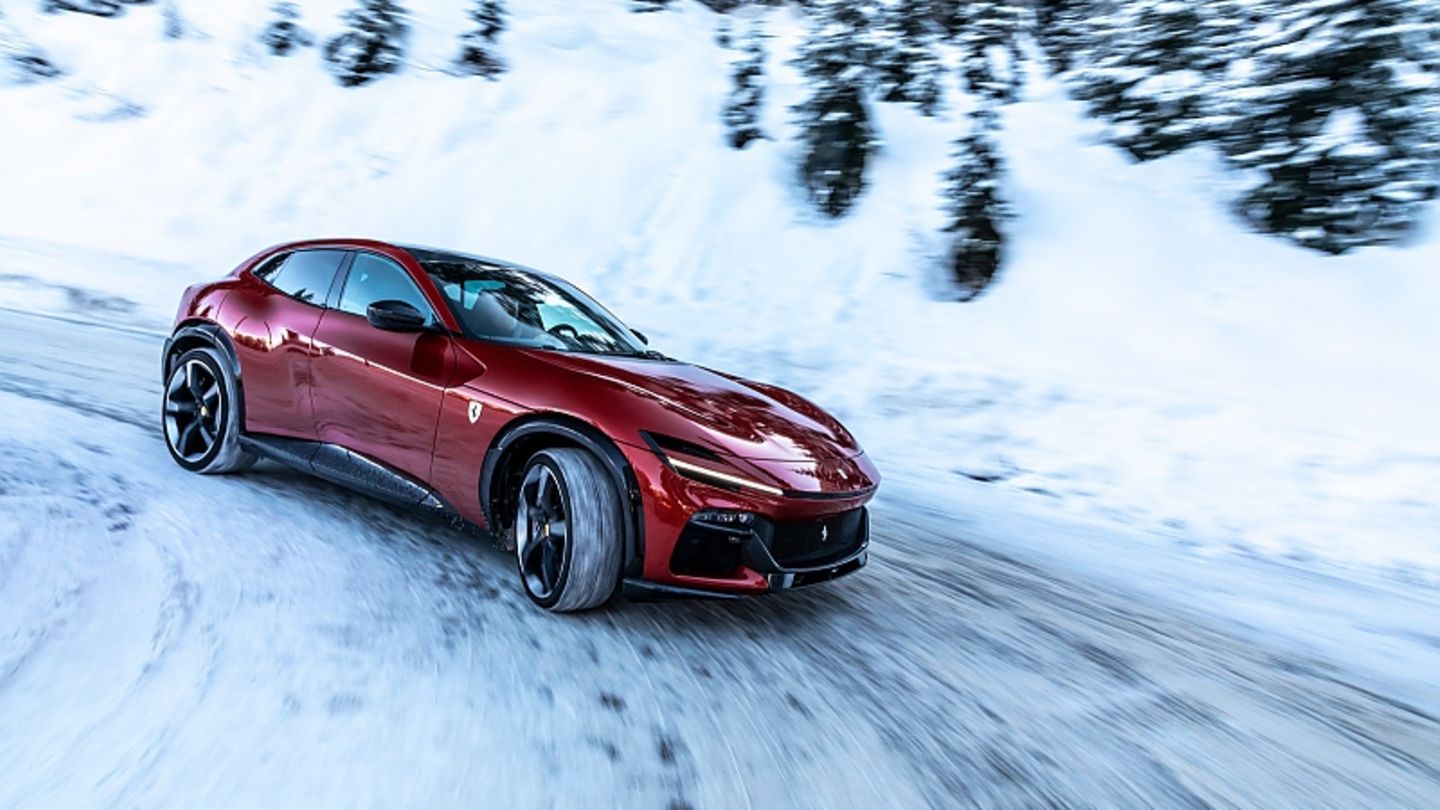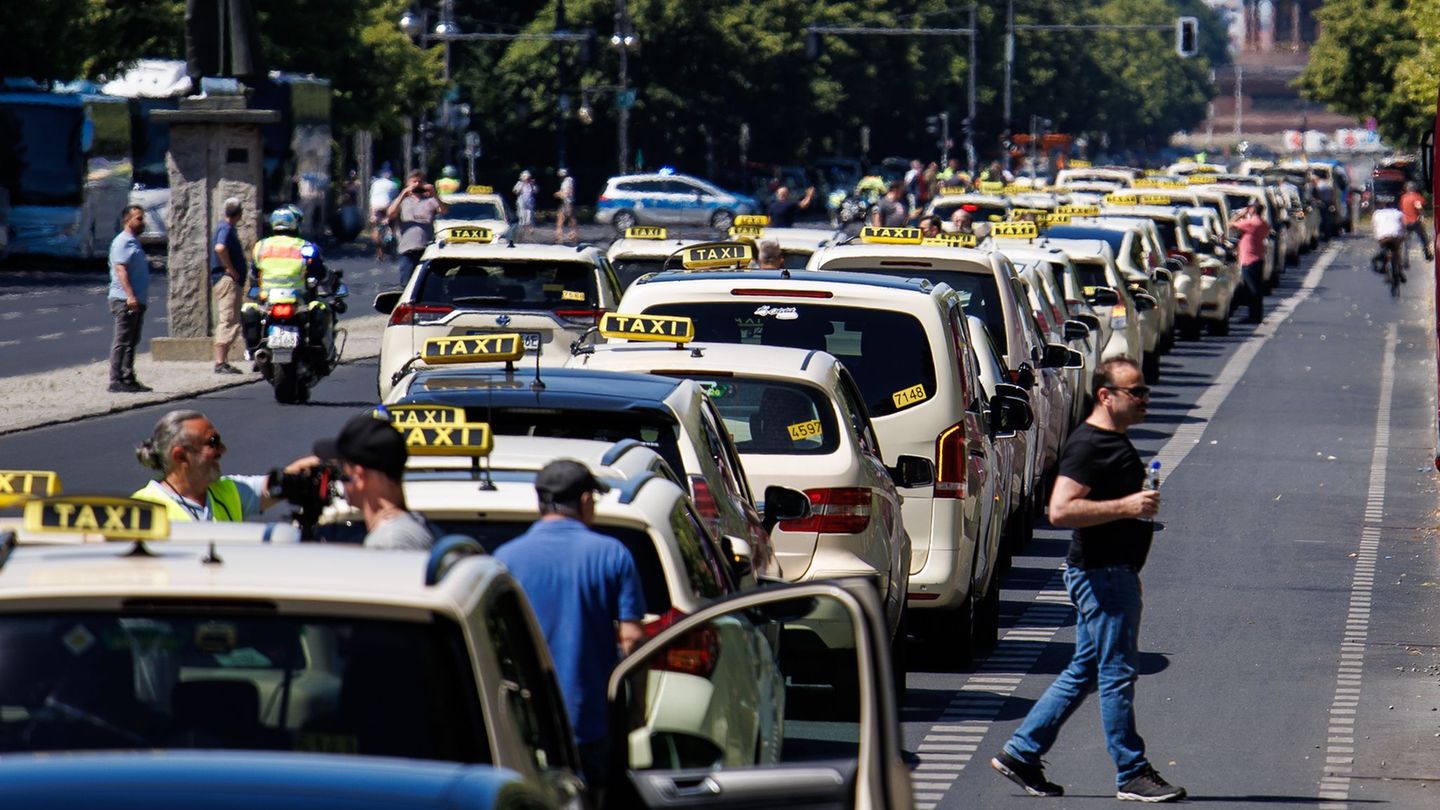Many Ferrari fans celebrate the long overdue crossover from Maranello with the Purosangue. But the northern Italians act as if the all-wheel drive SUV wasn’t one at all. But it is – better and more expensive than ever.
There it is now and let’s be honest: it was long overdue – some say. The others, real sports car fans with a baked Cavallino Rampante in their hearts, could have done without the first Ferrari crossover for a few more years. Purists range models such as 812 GTS, 296 GTB or Portofino. But the northern Italians could not ignore the ubiquitous SUV trend any longer, even in the top league of athletes, without burning money and upsetting customers who set themselves up comfortably in Range Rover Bentley Bentayga, Lamborghini Urus or BMW XM. And the discussion of whether yes – whether no, or why and at all – will no longer interest anyone by the middle of the year, because anyone who has driven the Ferrari Purosangue will fall in love with it faster than they would like. Despite his flaws, his mistakes and because he does a lot of things differently than many of his other committed colleagues.
The SUV it doesn’t want to be
Because while the international competition is currently trying at full speed to comb its own model portfolios with all their might for electric, the car manufacturer from Maranello is bringing its SUV debut work with a beefy, thundering V12 naturally aspirated engine onto the market. Applause applause! With an impressive 533 kW / 725 hp and a top speed of more than 310 km/h, it has absolutely nothing to do with electrical inputs, at least on the drive side. At least once. An electric drive, or at least a plug-in hybrid, is not what Ferrari wanted to deck out its first crossover with. No surprise: the consumption is therefore a slap in the face for all eco-fans: 17.3 liters per 100 kilometers – a 6.5-liter V12 naturally aspirated engine has to get its performance somewhere.
The Purosangue is truly visually successful, a real show especially from behind and the doors that open in opposite directions are extremely good as a distinguishing feature to the competition from Aston Martin DBX, Range Rover, Porsche Cayenne Coupé or Lamborghini Urus; but there is a lot more. Anyone who thinks that the new SUV with the whinnying Cavallo on the hood would mutate into a volume model overnight in the competition is mistaken. He should get a maximum of 20 to 25 percent of sales so that the brand remains a genuine sports car brand. It is doubtful whether this will remain the case in the medium term, because love for SUVs quickly became addictive at Aston Martin, Bentley, Porsche and Lamborghini and sales figures exploded. The medium-term future will show what the reluctance to sell in Maranello may be, because those responsible for Ferrari once obligatorily ruled out that there would be an SUV one day. What speaks against the fact that the 4.98 meter long Purosangue (translated thoroughbred) mutates into a volume model in the house is the price, because while the direct competition pants for electricity, it costs little more than 150,000 to 250,000 euros. The base price of the Ferrari Purosangue – please note: around 380,000 euros – without leather seats, navigation system and driver assistance systems worth mentioning.
Even many Ferrari fans’ mouths go dry and they long for a cool Chianti. The operation of the Purosangue with an overloaded steering wheel and missing central display is unimaginably bad – that makes every basic Dacia a few classes better. Three operating levels alone on the invisible rear of the steering wheel, a wild confusion of switches at the front with overwhelmed voice input and a navigation system that gets its data solely from the driver’s smartphone – simply unacceptable, not only in this league. This is also not achieved by the fact that the passenger gets his own display or the sports seats are air-conditioned and pleasantly contoured at the front. Incidentally, the Purosangue interior is lined with chic Alcantara as standard and, when the engine is supposed to take a backseat, bewitches with an equally spectacular Burmester sound. Unbelievable for a 2024 model: even with the driver assistance system or over-the-air updates, the crossover slips up without even shrugging its burly shoulders.
The Purosangue has a problem with the soft factors – quite different when driving, because the combination of a magnificent 6.5 liter V12, variable all-wheel drive and a finely tuned chassis together with an almost perfect weight distribution of 49:51 knows no weaknesses. The steering is in a class of its own with precise feedback from the road and wheel, although the standard rear-wheel steering for parking maneuvers could be a few degrees more to make the Italian colossus, which weighs more than two tons, even more manoeuvrable. Pitching and rolling movements – nothing like that, no matter how hard you take the four-wheel drive vehicle on fast downhill or uphill sections. You fall in love with this steering again and again and are surprised at how much comfort the eight-speed dual-clutch transmission can offer its occupants, especially during a leisurely drive. As is well known at Ferrari, the driving programs can be adjusted using a small rotary pushbutton on the jam-packed steering wheel. The spread of the individual modes fits and comfortable dampers with a tense muscle pack are the best on winding mountain roads despite winter tires. The advantage of the doors opening in opposite directions is hardly such, but it simply looks good and the rear entrances can be opened electrically. However, the rear does not offer much space for tall passengers – here, as well as with its cargo space of just around 470 liters, it underlines its sports car qualities without really wanting to.
Even if Ferrari doesn’t want to call it that: the Purosangue is a real SUV and in the class of high-performance models probably the best that can currently be driven on the road. Chassis, engine and the overall package are an excellent mix of desire and need. But Ferrari has some homework to do for the future, because the debut work is not competitive in terms of operation, navigation or networking. That doesn’t seem to bother most interested parties, because the waiting time from the official market launch in summer 2023 is at least 18 months. And after their record year 2022 with more than 13,000 vehicles sold, the northern Italians are likely to poach powerfully in the SUV competition and the expected 20 percent share indicates 2,500 to 3,000 vehicles in the first full year of sales. There is no question: the Purosangue will be a successful model for Ferrari and the electrification with a second engine variant will probably not be long in coming until the end of the decade.
Source: Stern
I’m a recent graduate of the University of Missouri with a degree in journalism. I started working as a news reporter for 24 Hours World about two years ago, and I’ve been writing articles ever since. My main focus is automotive news, but I’ve also written about politics, lifestyle, and entertainment.




